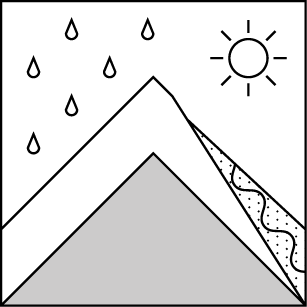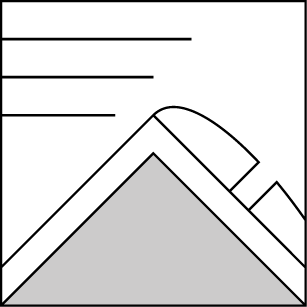Basic Information
Observation Details
Observation Date:
April 26, 2023Submitted:
April 28, 2023Observer:
SAC - Jon Preuss (off duty)Zone or Region:
Challis Area and Lost RiversLocation:
Mount Breitenbach (All aspects; 7,500-12,140')Signs of Unstable Snow
Recent Avalanches?
YesCracking?
None ExperiencedCollapsing?
None ExperiencedBottom Line
We went into the range with limited to no observations of the snowpack. The snowpack is still transitioning into a spring diurnal makeup. The south-facing slopes are more in a spring diurnal setup, while the norths are still very much winter. Based on a small input of snowpack analysis, most of the issues appear to be in within the upper snowpack. The current building heatwave will likely "finish off" the southern half of the compass and start chipping away at the north side.
Advanced Information
Weather Summary
Cloud Cover:
Mostly SunnyWind:
Light , WNew/Recent Snowfall:
HN: 0 cm; HST: ~30cmIn the morning, we had clear skies with increasing high clouds in the afternoon. The clouds and the wind helped keep the surface cooler, but solar input was strong. The temperatures felt HOT in the afternoon.
Avalanche Observations
| # | Date | Location | Size | Type | Bed Sfc | Depth | Trigger | Comments | Photo |
|---|---|---|---|---|---|---|---|---|---|
| 1 |
East Fork Pahsimeroi River N 11,300 |
D1 | SS | I-New/Old Interface | 20 cm |
AS-Skier c-Intentional |
Slope cut a small pocket of spin-drifted snow in a couloir. | None | |
| 2 |
Jones Creek SE 10,000 |
D1.5 | SS | I-New/Old Interface | ~25 cm | N-Natural | A couple of sun-induced small slabs failed on the early April melt-freeze crust. |

|
|
| 1 |
Jones Creek E 11,000 |
D1.5 | SS | I-New/Old Interface | ~25 cm | N-Natural | A wider sun-induced slab on an E-SE slope in the upper elevation. |

|
|
| 1 |
Jones Creek SW 10,700 |
D1 | SS | I-New/Old Interface | ~25 cm | N-Natural |

|
||
| 1 |
East Fork Pahsimeroi River NE 11,700 |
D1.5 | C | O-Old Snow | 60 cm |
N-Natural y-Sympathetic |
A cornice failed on the ridgeline and dropped onto the slope below, releasing a hard slab avalanche. |

|
|
| 1 |
Jones Creek W 9800 |
D3 | WS | O-Old Snow | ~60 cm | N-Natural | An impressive very large avalanche that likely failed during the heat wave of early April. I could see part o the crown below a rock band around 9,800', but I have low confidence that this was the highest part of the crown. The debris was likely over 30' deep in the drainage bottom! A very nasty looking debris flow. |

|
|
| 1 |
East Fork Pahsimeroi River NE 10,800 |
D2.5 | HS | O-Old Snow | ~100 cm | N-Natural | A thick crown in between Mount Church and Bad Rock. This was likely influenced by a large wind/precip. loading event, but was the only observed "recent" large avalanche on a north-facing slope. |

|
Snowpack Observations
The Lost received lots of wind and two storms within the last week. Some south-facing slopes were scoured down to the early April heatwave crust, while other sections had 1-2' drifts. A natural cycle likely occurring during the same time as in the Boulder/Pioneer mountains was mostly on S-W aspects. The upper snowpack on souths had about 8 inches of new snow with a thin melt-freeze crust and decomposing snow below it, which was sitting on top of the early April heatwave crust. It was clear that there were two different storms with a brief period of sun between them. The new snow was still transitioning and varied with breakable crusts.
The north-facing slopes had less natural activity from the warming temperatures. The snowpack resembled a winter time layout. We didn't find any layers of concern in the upper snowpack with lots of hand pits and no recent activity to aid that conclusion.
Avalanche Problems
| Problem | Location | Distribution | Sensitivity | Size | Comments |
|---|---|---|---|---|---|
 Wet Loose
Wet Loose
|
|
Layer Depth/Date: 20-30 cm |
|||
 Wind Slab
Wind Slab
|
|
Layer Depth/Date: 20-30 cm Comments: We kicked off a small wind slab, but didn't come across any other reactive wind slabs. |
Terrain Use
We skied terrain approaching 50 degrees and skinned/boot packed through 35-45 degrees on both north and south-facing slopes.
